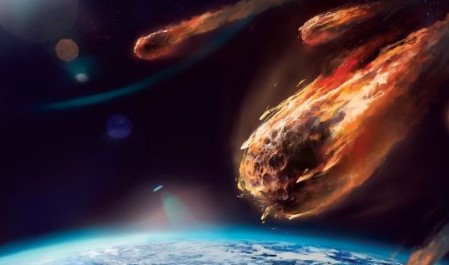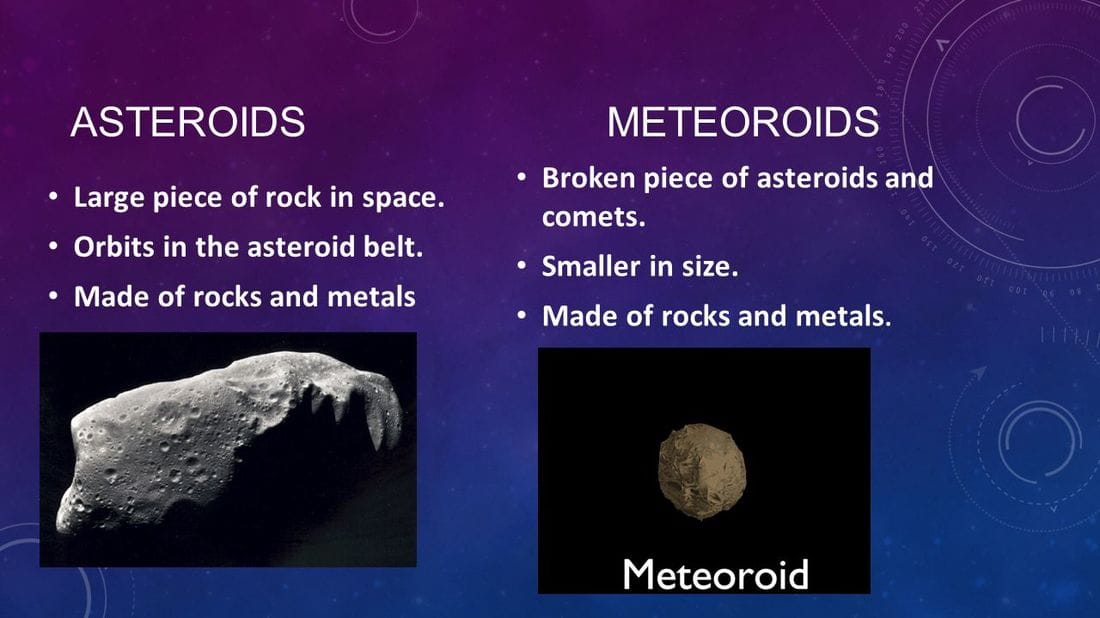
In essence all 3 are very similar and besides a few minor elemental and actionable differences they aren’t completely divergent from each other. Source What Are The Differences Between Asteroids, Meteors And Comets? If Meteors do manage to not completely burn out before hitting Earth they are then referred to as meteorites but, other than this meteors aren’t all that different from asteroids or comets. Meteor showers are actually quite common on Earth where on average roughly 17 pieces of space rocks tend to enter our atmosphere. These space rocks typically aren’t ever bigger than 100 meters but, much like asteroids, they can be formed in multiple different ways, whether they be made of clay and rock, made completely of metal or a combination of both elements. Meteors are basically smaller asteroids or comets that enter Earth’s atmosphere and in turn produces that iconic fiery look that is so often associated with them. These as the name would suggest are made of metals namely nickel and iron.Ĭomets are formed when icy rocks in space orbit really close to the sun resulting on the ice rock evaporating into water vapour and dust producing the white/blue coma streak behind it that’s commonly associated with these space rocks.Ĭomets are far rarer than asteroids and meteors as according to NASA we only know of 3679 different ones, which of course is a massive difference between the over 1 million asteroids observed.Īs for how big comets can get, they tend to range between 750m – 20km so still very big even if on average they’re smaller than asteroids. M-type asteroids : these asteroids can also be called metallic asteroids tend to be red in colour making up around 8% of all observed asteroids.

They are also said to be made of silicate materials and nickel-iron

Therefore it shouldn’t be too surprising then that NASA have categorised these asteroids in a multitude of different sections, which of course I’ll briefly list below : For example an asteroid called 243 Ida has a tiny moon called Dactyl orbiting it.Īs for how many asteroids are within the asteroid belt, it is estimated that over 1 million with diameters of over 1km reside within this region whilst a further 200 super massive 100km asteroids orbit the sun there too. Vesta 4 currently the largest asteroid we know ofĪsteroids, much like every object in the universe, have their own gravitational pull and as a result some of the largest observed asteroids within the belt can also have their own mini moons orbiting around them.

The size of an asteroid can also vary quite dramatically from being as small as 2m to as large as 525km (Ceres at 940km used to be regarded as the largest until it was officially re-categorised as a dwarf planet).

They can also be referred to as planetoids and are, much like the other 2 space rocks on this article, lacking atmosphere. Can You Observe Asteroids, Meteors And Comets With A Telescope?Īsteroids are smaller rocky objects that can be found in space that orbit our sun and are generally found within the asteroid belt found in the space between Mars and Jupiter.What Are The Differences Between Asteroids, Meteors And Comets?.


 0 kommentar(er)
0 kommentar(er)
